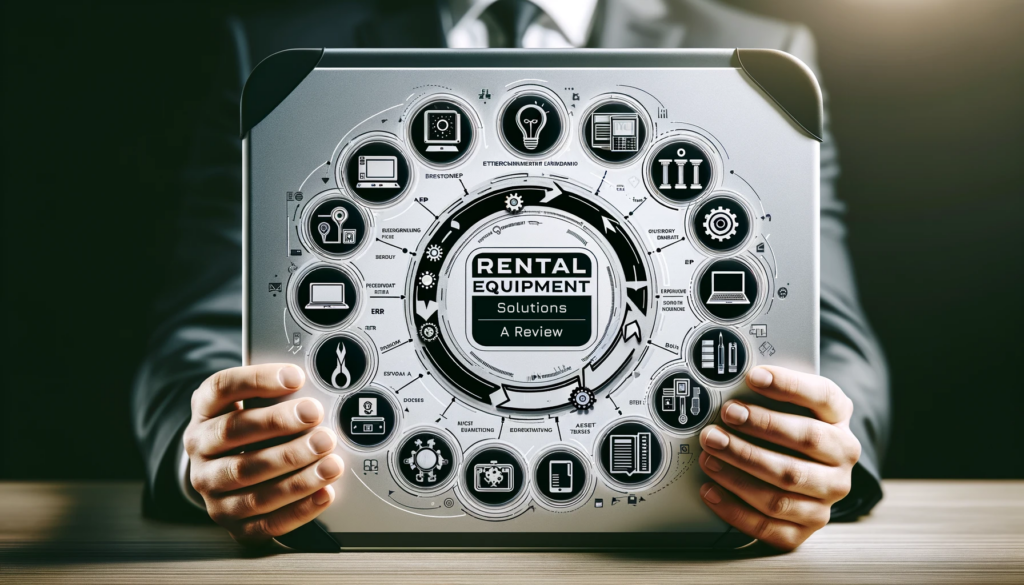Rental Equipment Solutions: A Review
TLDR
The future of the RER industry hinges on adopting the right digital tools. Whether it's robust off-the-shelf software like POR and RentalMan, fully custom solutions, or middleware, each option presents unique benefits and challenges.
The Rental Equipment industry is undergoing a significant transformation, propelled by digital technology. Traditional methods are being phased out in favor of more efficient, scalable, and flexible solutions. Among these are established software products like Point of Rental (POR) and RentalMan, as well as emerging low-code platforms. Alternatively, custom solutions are yet another option. Understanding the strengths and weaknesses of these options can help RER businesses strategically position themselves for the future.
Point of Rental (POR)
Overview: Point of Rental is a comprehensive rental management system designed to cater to the needs of a wide variety of rental businesses, including those in construction.
Pros:
- Robust Inventory Management: Track every item in real-time, with features to manage maintenance schedules and history, ensuring high availability and reliability of rental items.
- Integrated Customer Relationship Management (CRM): Build stronger relationships with detailed customer records, including order history, preferences, and communication logs.
- Advanced Analytics and Reporting: Gain insights into business operations with data-driven decision-making tools that help optimize inventory levels and improve profitability.
Cons:
- Complexity and Cost: The extensive features come with a steep learning curve and higher cost, which might be prohibitive for smaller businesses.
- Flexibility Limits: While highly configurable, it may not meet all specific niche requirements that some rental businesses have.
When digital transformation is done right, it’s like a caterpillar turning into a butterfly, but when done wrong, all you have is a really fast caterpillar
George Westerman, MIT Sloan
RentalMan
Overview: RentalMan by Wynne Systems is another robust rental management software that provides extensive modules tailored to manage large fleets of rental equipment.
Pros:
- Fleet Optimization: Excellent for managing large fleets with features to track the location, status, and performance of each piece of equipment.
- Integrated Financials: Comprehensive financial management tools that integrate with general ledger, accounts payable, and accounts receivable.
- Scalability: Designed to scale with your business growth, making it suitable for large enterprises with extensive inventory.
Cons:
- User Interface: Users often report that the interface can be outdated and less intuitive, which might impact the adoption rate across personnel.
- Customization Constraints: While powerful, customization options are limited unless undertaken by the vendor, which can be costly.
Custom Solutions
Custom software development involves creating tailored software applications that are specifically designed to meet the unique needs of a business.
Pros:
- Perfect Fit: Exactly meets the specific requirements of a business, accommodating unique workflows and processes.
- Competitive Advantage: Offers features that are not readily available in off-the-shelf software, providing a competitive edge.
Cons:
- High Cost and Time: Development can be expensive and time-consuming.
- Maintenance Overhead: Requires ongoing support and updates, potentially increasing total cost of ownership.

VitalEdge
Overview: VitalEdge offers a robust solution for equipment dealerships and rental companies looking for an integrated approach to manage their entire business within one platform. It brings significant improvements in efficiency and data management
Pros:
- Industry-Specific Features: VitalEdge is tailored for equipment dealers and rental companies, offering deep industry-specific functionalities such as equipment lifecycle management, rental contracts, and dealership management.
- Integrated ERP System: As a full ERP system, it integrates various aspects of a business from inventory and rentals to accounting and CRM, facilitating seamless information flow and improved operational efficiency.
- Real-Time Data Access: Provides real-time access to critical business data, allowing for better decision-making and faster response times to market changes or operational needs.
- Mobile Solutions: Offers mobile capabilities that enable field staff and technicians to access information and perform tasks remotely, enhancing flexibility and productivity.
Cons
- Complexity and Implementation: The comprehensive nature of an ERP system can make it complex to implement and may require significant time investment to fully integrate into existing processes.
- Cost: Typically, ERP solutions like VitalEdge are more expensive than simpler management systems, both in terms of initial outlay and ongoing maintenance. This might be a barrier for smaller businesses.
- Training Requirements: Due to its extensive features and capabilities, significant training may be required for staff, which can add to the overall costs and implementation timeline.
Middleware
The role of middleware is a hybrid approach that gives as close to a perfect fit as possible without reinventing the wheel. The middleware acts as a bridge to existing systems and more modern technologies to give quick reliable progress.
Pros:
- Custom perfect fit: Specific business requirements can be custom coded while leveraging an existing solution that has gotten 80% to the goal. This gives you the best of both worlds.
- Not being forced into “someone else’s” solution
- Incremental change, not forced to update everything at once.
Cons:
- Custom software requires some level of maintenance.
- The need for an integration partner
Conclusion
The future of the RER industry hinges on adopting the right digital tools. Whether it’s robust off-the-shelf software like POR and RentalMan, fully custom solutions, or middleware, each option presents unique benefits and challenges. By carefully evaluating these choices against their specific operational needs, rental businesses can not only future-proof their operations but also gain a significant competitive advantage in the evolving market landscape.
Schedule a virtual coffee chat
To learn more about your opportunities, competitiveness, and how you can take advantage of your opportunities from our point of view.